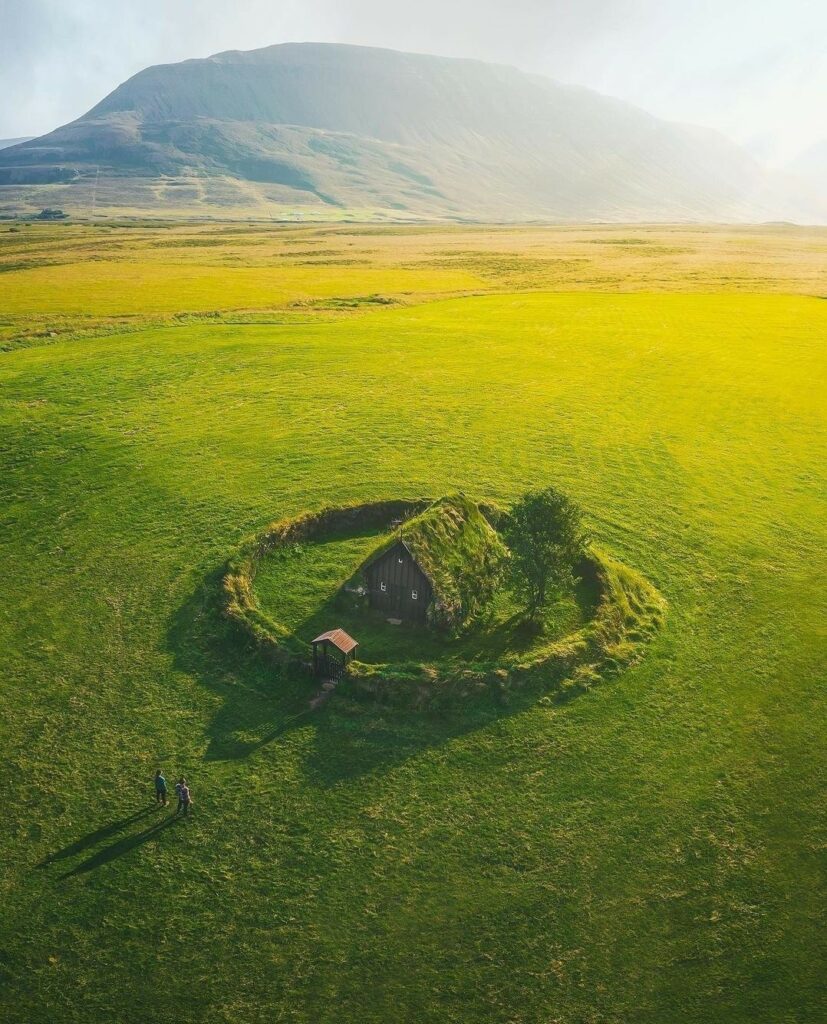Uncovering the Fascinating History of Turf Houses in Iceland
Turf houses are an iconic part of Iceland’s cultural heritage, and their history dates back over a thousand years. They were first introduced to Iceland by the Vikings in the 9th century, and they quickly became the most popular type of housing on the island due to their ability to provide insulation from the harsh Icelandic winters. The houses were constructed using a framework of wooden or stone beams, which were then filled with turf, or grass, that was cut from the surrounding landscape.

Over time, turf houses evolved to become more sophisticated, with multiple rooms and even multiple levels. The roofs were made from timber and covered with turf or sod, which provided excellent insulation and kept the houses warm in the winter and cool in the summer. Many turf houses also featured distinctive chimneys that were made from stone or turf, and which helped to vent smoke from the hearth and keep the interior of the house free of soot.

Turf houses remained the dominant form of housing in Iceland until the 20th century, when modern building materials and techniques began to replace them. However, many turf houses have been preserved and restored, and they remain an important part of Iceland’s cultural heritage. Today, visitors to Iceland can explore some of these historic buildings and gain a greater appreciation for the country’s rich history and traditions.

In addition to their practical benefits, turf houses also have important cultural and symbolic significance for Icelanders. They are a symbol of the country’s connection to the land and the natural environment, and they represent a way of life that has been passed down through generations.

Grafarkirkja Turf Church
The Grafarkirkja turf church, located in Höfðaströnd in North-Iceland, is actually Iceland’s oldest turf church. The current structure dates back to the 17th century, and it is one of the few remaining turf churches in Iceland.

How to Find Abandoned Turf Houses in Iceland and What to Expect
Finding abandoned turf houses in Iceland can be a fascinating and rewarding experience for travelers who are interested in the country’s cultural heritage. Here are some tips on how to find and explore these historic buildings:
- Research: Before embarking on your journey, it’s important to do some research on the location of abandoned turf houses in Iceland. There are several websites and guidebooks that provide information on the history and location of these buildings, as well as tips on how to access them safely.
- Visit Museums: Many museums in Iceland have preserved and restored turf houses on their grounds, which can provide a great introduction to the history and construction of these buildings. For example, the Skogar Folk Museum in southern Iceland has a collection of over 20 historic buildings, including several turf houses that have been restored to their original condition.
- Explore Rural Areas: Abandoned turf houses can often be found in rural areas of Iceland, particularly in the countryside and along the coast. Some of the best places to look include the Skaftafell National Park in the southeast, the Westfjords region in the northwest, and the Snæfellsnes peninsula in the west.
- Seek Local Knowledge: If you’re having trouble finding abandoned turf houses on your own, consider seeking out the help of locals. Many Icelanders are proud of their cultural heritage and are happy to share their knowledge and experiences with travelers. You can also consider joining a guided tour or hiring a local guide to help you navigate the landscape.
When exploring abandoned turf houses in Iceland, it’s important to be respectful of the buildings and their surroundings. Many of these structures are fragile and can be easily damaged, so it’s important to avoid climbing on or touching them. It’s also important to be mindful of the natural environment and to leave no trace of your visit behind.

Visiting abandoned turf houses in Iceland can be a fascinating and rewarding experience, providing a unique glimpse into the country’s rich cultural heritage and history. By following these tips and being respectful of the environment, travelers can enjoy a memorable and educational journey through Iceland’s past.

